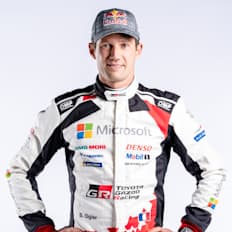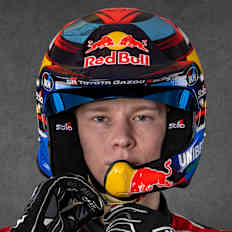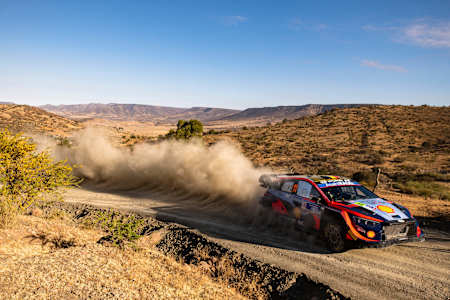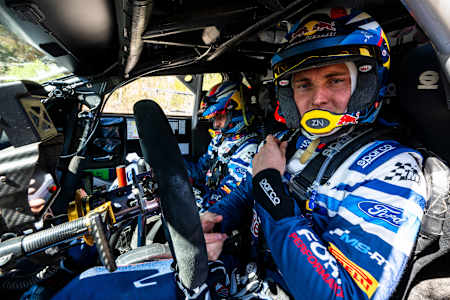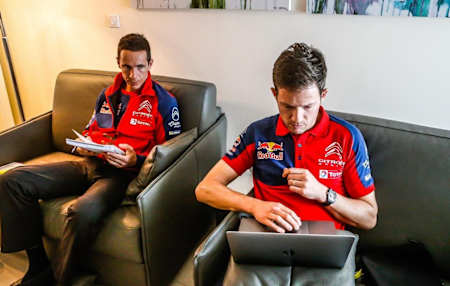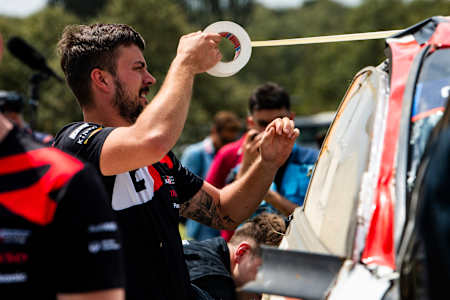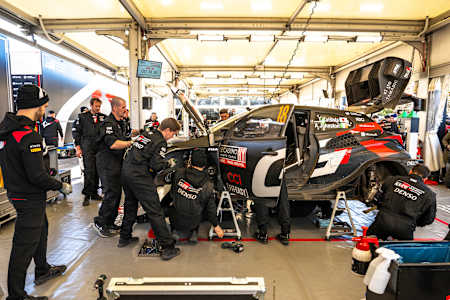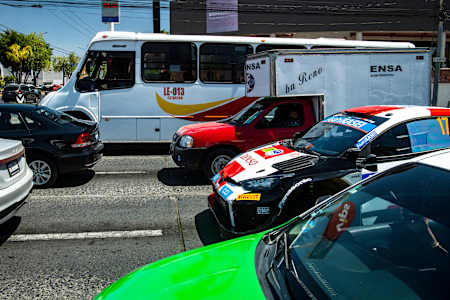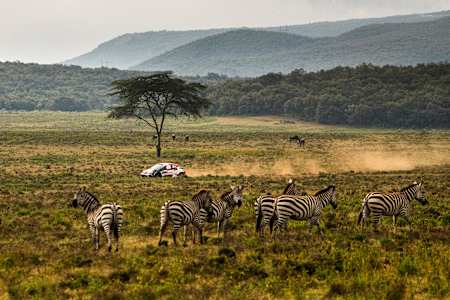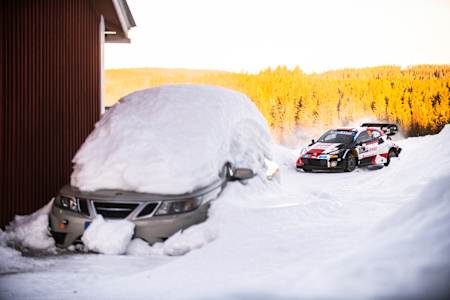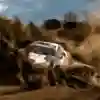Red Bull Motorsports
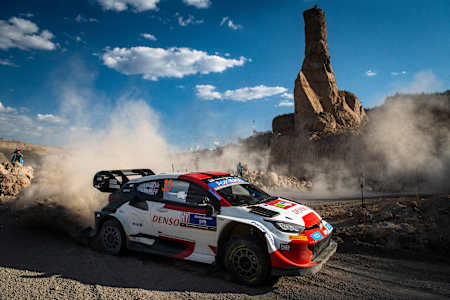
WRC
What is a WRC Rally? Common WRC questions
Learn what WRC rally is and uncover the excitement of the World Rally Championship, including its format, rules, and iconic stages.
Established in 1973, the World Rally Championship (WRC) has come a long way since the very first race at the Rallye Monte-Carlo. The cars have changed significantly, as have the rules. So let’s answer some of your burning questions about the sport.
01
What is a WRC rally
A WRC rally is a race against the clock, pitting crews (driver and co-driver) against a section of road (stage), which can be anything from 10 to 50km. The fastest through the stage is the winner and the fastest through all the stages wins the rally. There's usually several stages in each session across the three days of the rally. The classic format starts with a ceremonial start on Thursday night with rallying on Friday to Sunday. But WRC is always evolving and developing new tests to challenge the teams and entertain the fans: new for 2024 is a 48-hour sprint format being tested at Rally Sardegna.
Get up to speed with the ABC of… WRC

1 min
ABC of... WRC
Get a crash course in the terminology, rules, and courses of the World Rally Championship.
02
Where do the rallies take place?
WRC is an all-round test of driving skills held on a variety of surfaces: dirt, gravel, asphalt and even snow. The championship tours the globe pitting the crews’ skills against the most challenging (and spectacular) roads in the world: gravel in Finland, mountainous asphalt roads in Japan and dirt in Kenya.
03
What is a WRC stage?
To test the crew’s skills, competition takes in different types of stages. Super special stages tend to be short and create a spectacle as they change the character of the rally – such as a change of surface, a sprint or a head-to-head battle is used – while power stage is usually the final stage of a rally and carries extra points.
04
How do you win a rally and how do you become a WRC champion?
The points scoring system has overhauled for 2024 to offer more chances to score points throughout the rally. Crews can score a maximum of 30 points in a rally, the first of which are allotted at the end of Saturday’s action. First place receives 18pts, second gets 15, 13 for third with points all the way down to P10 – but they only collect the points if they reach the finish line on Sunday.
The final day provides the opportunity for the fastest overall driver to get seven points for P1 with point-paying places down to seventh. Sunday also sees a Power Stage – the final stage and the chance to score a bonus five points for the winner down to one for fifth place. The rally winner will still be the fastest through the stages, but by spreading points scoring across the days, it creates more chances to score points through the long weekend.
05
Who has won the most titles in WRC?
French drivers have dominated WRC in the 21st Century, Sébastien Loeb scored nine world titles consecutively from 2001 to 2012 and has won a record 80 rallies. His compatriot, occasional team-mate and frequent rival Sébastien Ogier has eight and is still competing. Notably, while Loeb’s titles all came at the wheel of Citroëns, Ogier has moved manufacturers, firstly with VW from 2013-2016, then a Ford with M-Sport and a Toyota. But Finns deserve a special mention from 1978 champion Markku Alén via Ari Vatanen, Juha Kankkunen, Tommi Mäkinen and Marcus Grönholm to the reigning world champion Kalle Rovanperä.
06
What does a WRC co-driver do?
Unlike F1 or WRX, where the cars race around a circuit, WRC involves driving as fast as possible through a sequence of sharp turns and undulations, frequently along narrow roads. These change from year to year and are unfamiliar. The crews (driver and co-driver) map the route in a recce at the start of the rally week. They get a maximum of two passages on each stage, compiling pacenotes describing the angles and direction of turns plus any potential hazards.
During the stage, the co-driver has to tell the driver what is coming on the road ahead in time for him to react and manoeuver. It’s a constant stream of live directions to the driver, including how far ahead the next turn is and how fast they can go through it.
07
What does it take to be a WRC co-driver?
It’s a crucial role, highly stressful and demands patience, meticulous attention and an excellent relationship with the driver. Julien Ingrassia, an eight-time World Champion who was Sébastien Ogier’s co-driver, explained the process: “I transcribe while trying to take as many visual cues as possible. When you are going 180kph and then you have to take a sharp left, what I am saying is crucial. A note said five-10ths of a second too late can ruin everything.”
Another key trait is nerve; the co-driver has to trust the skills of the driver entirely, because they’re reading pacenotes and not watching the road. The other key aspect is mechanical skills: in addition to assisting in the garage, crews often have to make running repairs to the car during the rally.
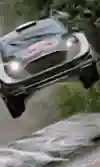
2 min
POV: Running flat out with Ogier at Rally Finland
Watch four-time world champion Sébastien Ogier as he tests his M-Sport Fiesta ahead of Rally Finland.
08
How fast is a WRC car?
The fastest rally time was set by Kris Meeke at the 2016 Rally Finland, winning by 29.1s and at an average speed of 126.62kph. According to Toyota, the Yaris WRC has a top speed of 201kph although it’s rare that the cars hit that, as rally is much more about acceleration and close control through sharp turns on narrow roads.
09
Who are the major manufacturers in the WRC?
There are three manufacturers producing rally cars for the top level of WRC, Toyota, Ford and Hyundai. A key aim of the new rally rules is to simplify the cars, making them considerably cheaper to build and easier to maintain, which should attract more manufacturers. Dropping hybrid engines from the championship means cars will still have to be fuel efficient, but also more suitable for use away from the European rallying heartland.
10
How much does a WRC car cost?
Watch this space. The current WRC cars are hybrids with a 1.6-liter petrol engine with an electric 130kW unit to boosts power to 520 horsepower. But that's about to change as WRC enters a new era designed to attract more entrants, teams and manufacturers. The hybrid unit is out, restricting the drivers to 330hp. That also means a weight reduction of 87kg to make the cars lighter and quicker and saving $163,000 on the cost of the car. In 2026, you'll see even more changes with larger cars built around a safety cell and costs capped at $435,000 – less than half the current price.
11
What happens if, or rather when, the cars crash?
For a minor prang, the crews have tools on board to carry out their own repairs on stage – anything from a puncture to removing bodywork and tinkering with the engine. At this year’s Safari Rally, Thierry Neuville and co-driver Martijn Wydaeghe got creative when a rear tire exploded, tearing away bodywork from the side of the car. They managed to repair their Hyundai using a tree branch with a cloth wrapped around it to remove dirt. “A tire exploded 150m before the finish and destroyed the whole bodywork, so for the last stage we had do some MacGyver stuff to try and survive in the dust,” said Neuville. If MacGyver can’t fix it, they have to get a tow back to the service park.
12
If they can’t fix the cars at the roadside, how do they repair the cars?
The service park is a mobile paddock where the mechanics can service and repair cars. It’s also where the media and hospitality are based. All the cars return to the service park between sessions for tuning, tweaking set-up and repairs. Once the rally has started, servicing is limited to just 15 minutes in the morning prior to the race, 30 minutes during the day, and 45 minutes at night and if they overrun, they will pick up a penalty. The mechanics are the best in the business, but if they can’t get the car back up and running in the set time, the team will have to choose whether to retire from the rally or take a penalty in the hope of still scoring points.
13
Can road cars end up next to rally cars during a race?
Yes and no. The timed stages take place on closed sections of road. However, each driver is responsible for getting themselves from the end of each stage to the start of the next one. This often means driving on public sections of road where the WRC cars must obey traffic regulations just like any other car. This gives fans the chance to see the cars up close and watch racing drivers fumbling for change at toll booths.
14
Are there drivers who are specialists on certain surfaces?
Rally Sweden is held on frozen, snowy roads which are slippery and utterly unforgiving. A notable winner is Kalle Rovanperä’s father Harri in 2001. As a unique test, the rally is an outlier in the championship and has been dominated by Scandinavians especially Swedes – Stig Blomqvist, Björn Waldegård and Kenneth Ericsson – and Finns, Grönholm, Jari-Matti Latvala and Mäkinen all being multiple winners.
15
Where can I watch WRC?
Never miss a moment on the official WRC TV. And you can watch free WRC highlights on Red Bull TV! Red Bull TV delivers WRC highlights every Friday, Saturday and Sunday. Witness the day's most heart-stopping moments without subscriptions. Head to Red Bull TV or download the app and search 'FIA World Rally Championship' to fuel your rally spirit.
Part of this story


